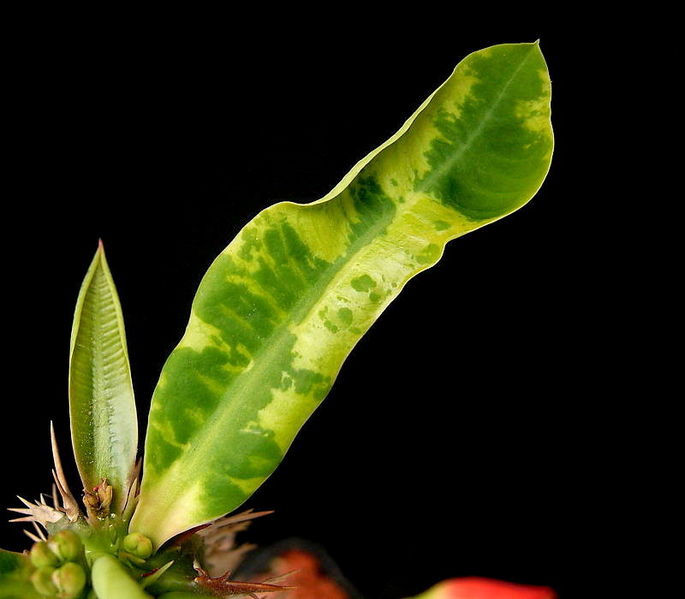One of the main differences between plants and animals that I flagged up in the last post is that plant cells don't move. The use of the hypersensitive response shows another; plants have a very non-determinant structure. Animals will grow towards a clear well defined shape and once they get it, they stick with it. Your body does change as you grow older, but it's not about to grow an extra leg. Plants on the other hand may have determinant structures within them, such as leaves or flowers, but the overall organism can just keep growing for as long as it needs to. If a leaf is lost through disease, the plant can just grow a new one, or several new ones.
These leaves are expendable. Your arm is not. Image from wikimedia commons.
Because of its non-determinant nature it is a lot easier for the plant to kill parts of itself off in order to stop an infection spreading. One way that the hypersensitive response does this is by the production of large numbers of reactive oxygen species in cells surrounding the site of infection. These include hydrogen peroxide, and various hydroxide and oxygen containing free radicals. Free radicals are species with one unpaired electron and therefore are extremely reactive and extremely dangerous. These free radicals lead to chain reactions that can break down lipids in the membrane, inactivate enzymes and generally roll around like a loose canon causing havoc within the cell.
As well as reactive oxygen species, the cell also experiences large ion fluxes, as potassium and hydroxide ions flood into the cell and hydrogen and calcium ions flood out. These result in the cell releasing any stored toxic compounds it might have (which may also help to kill the bacteria) and may serve to integrate the mitochondria into the process of cell death (see reference one). As mitochondria are crucial in coordinating the programmed cell death of animal cells it would be surprising if they did not play some part in the controlled destruction of plant cells. The actual sequence of destruction varies from plant to plant, but the overall result is the same, and area of dead plant tissue within the still healthy surviving plant.

A leaf infected with tobacco mosaic virus, showing lighter areas of dead leaf interspersed with the green areas of normal growth. Image from wikimedia commons.
The plant hypersensitivity response can (if you want it to) be considered analogous to the human innate immune response, in that it occurs directly in response to a bacterial attack, and it occurs only at the site of bacterial infection. Plants, however, also have ways of making more long-term changes to protect against bacterial attacks in the future both at the site of the old reaction and throughout the whole plant. How the plant achieves this, without any cellular movement, will be the topic of the final post in this mini-series.
---
Lam, E., Kato, N., & Lawton, M. (2001). Programmed cell death, mitochondria and the plant hypersensitive response Nature, 411 (6839), 848-853 DOI: 10.1038/35081184
Pontier, D., Balagué, C., & Roby, D. (1998). The hypersensitive response. A programmed cell death associated with plant resistance Comptes Rendus de l'Académie des Sciences - Series III - Sciences de la Vie, 321 (9), 721-734 DOI: 10.1016/S0764-4469(98)80013-9



















No comments:
Post a Comment